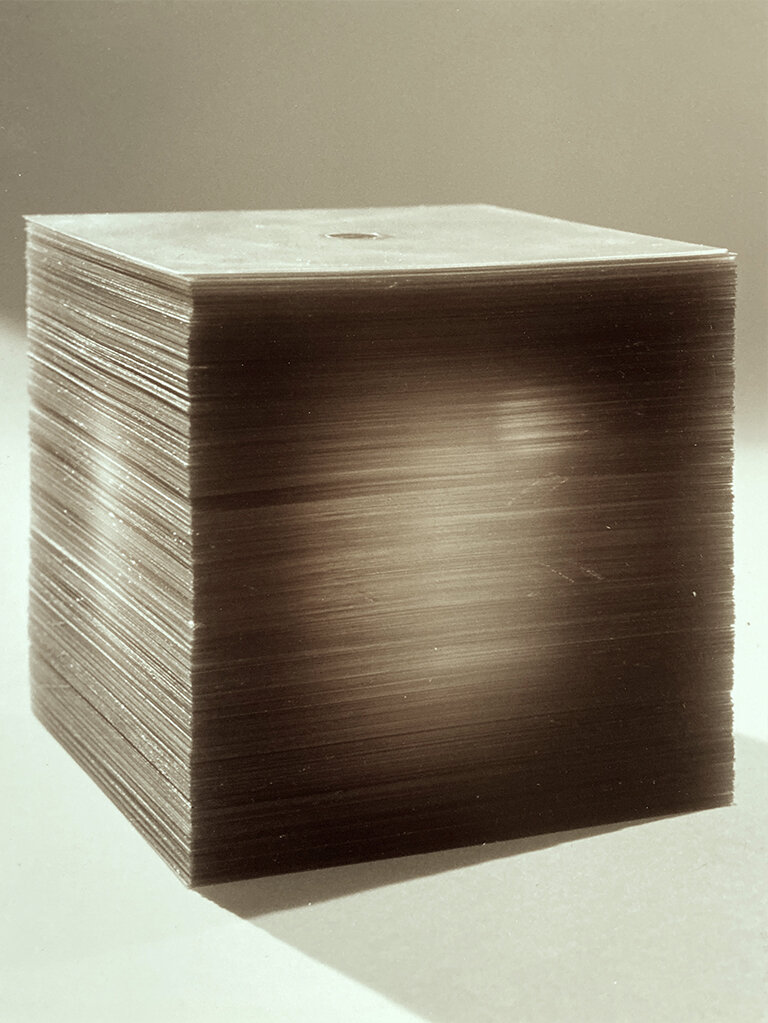
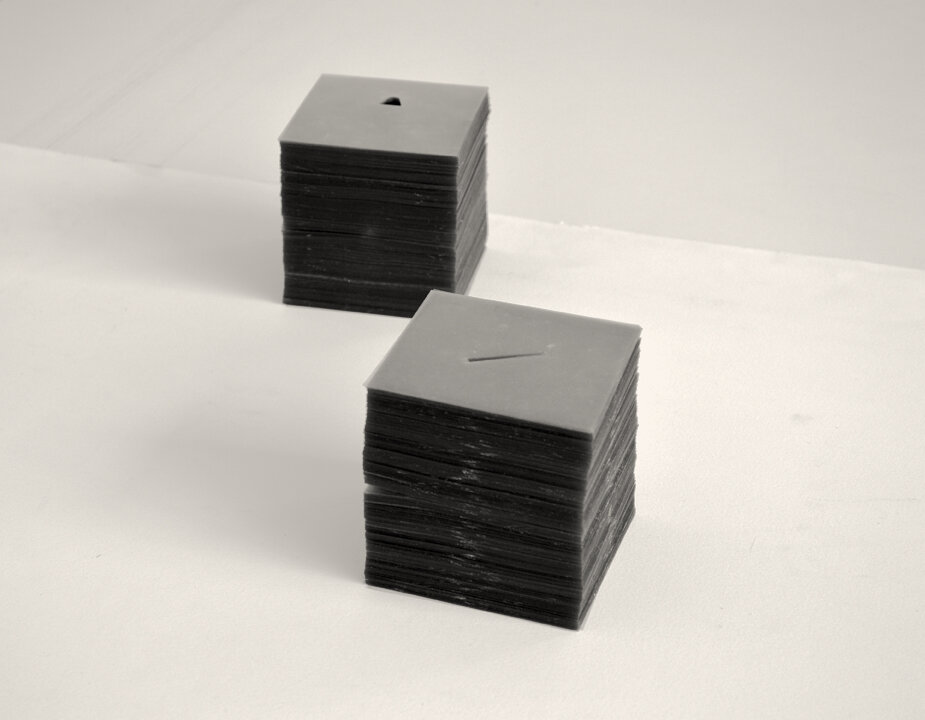

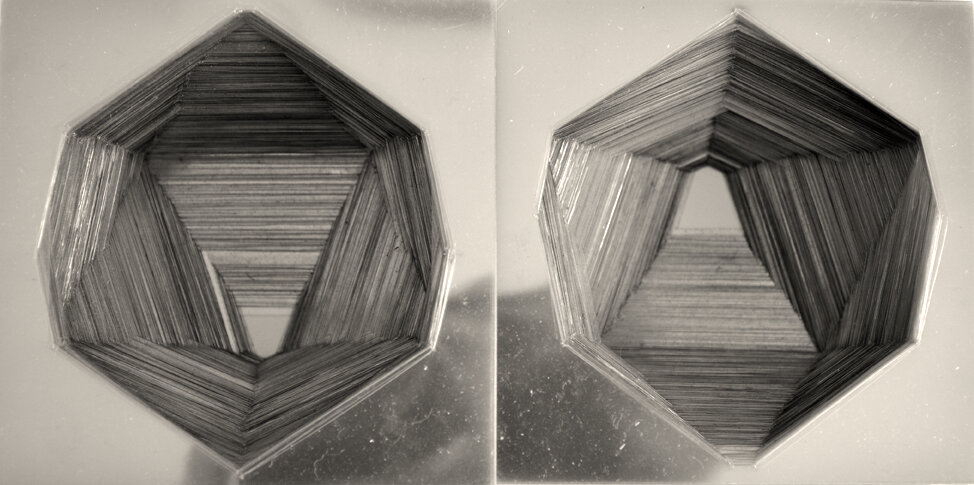

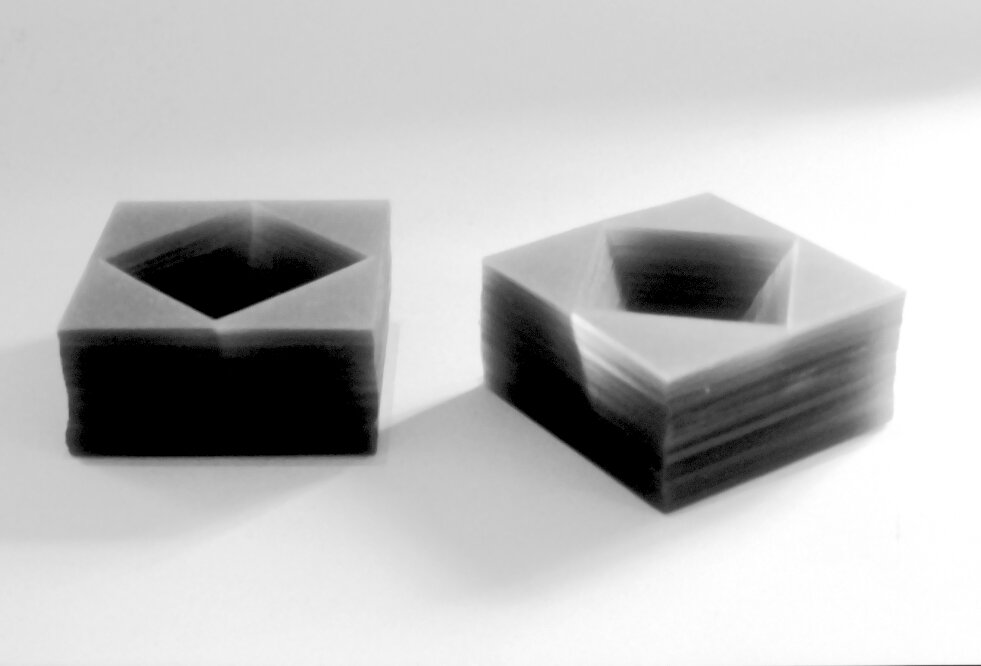
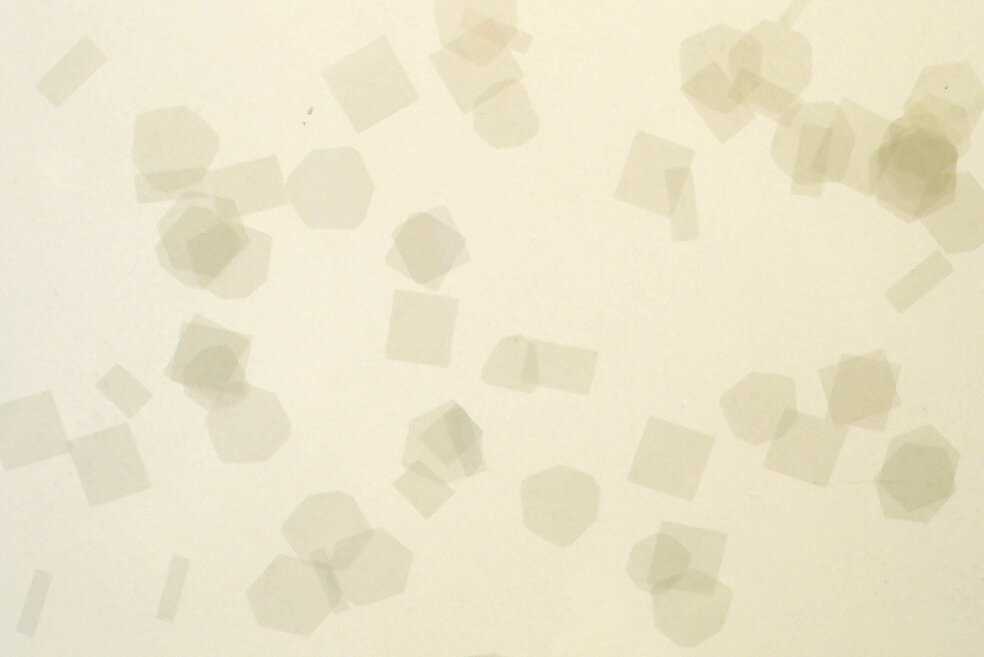

Either this is madness or this is Hell. “It is neither,” calmly replied the voice of the Sphere. “It is Knowledge. It is Three Dimensions. Open your eye once again and try to look steadily.” -Flatland, A Romance in Many Dimensions, Edwin Abbott Abbott, 1884
The Sphere, 1996, 3 x 3 x 3 inches (7.6 x 7.6 x 7.6 cm), acetate, (essay: Gordon Laurin)
Lucy Pullen has for the past few years been making objects that take delight in the provocation of the untested, presented as a hypothesis on order and the relationship between science and nature. While her work varies dramatically in its final form, an analytical orientation can be isolated as a unifying thread throughout her recent work. While studying at the nova Scotia College of Art & Design, Pullen focused on Painting. Since completing her studies in 1994, her interests have centered primarily on sculpture, marking a clear break between her early studies and current practices. As an essentially self-taught sculptor, she has allowed herself freedom in exploring a range of working methods and sources in her work. This variety of activities is evidenced in the simultaneous investigations of geometric/social order and her continuing figurative sculptural work.

STUDIO VIEW, DODECAHEDRON AND ICOSAHEDRON, 3 X 3 X 3 INCHES, ACETATE, 1997 (essay: Gordon Laurin)
Pullen's involvement with geometry as an ordering system cam be isolated in the Perfect Solids, which individually represent the five platonic solids. The shapes have long represented the beginnings of Pythagorean mysticism, a way of sorting the universe in strict geometric forms. As some of the basic elements of crystalline structure, they both literally and symbolically represent the basic ordering of form before atomic and subatomic discoveries. They illustrate what things are made of. For Pullen, the perfect solids spiritual implications are of less interest than their use as hypothetical models in understanding the material world.

INTERIOR VIEW (TOP), DODECAHEDRON, 3 X 1.5 X 6 INCHES, STACKED ACETATE: 1000 SHEETS, 1997 (essay: Gordon Laurin)
Each piece is constructed from 1000 individual 4 by 4 inch acetate sheets stacked to form a cube. Using computer generated templates, each sheet has had a fractional intersection of one of the solids cut from its interior plane. Once cut and compiled, the cubes hold in negative the shape of one of the solids. Built with a corresponding number of sides, the solids are the four-sided tetrahedron, the six-sided cube, the eight-sided octahedron, the twelve-sided icosahedron, and the twenty-sided dodecahedron. These enigmatic but beautiful sculptures, while representing structural stability, are tentative and vulnerable. Moving and handling these works, thousands of loose sheets with impossibly intricate orderings, is an unsettling activity, especially when Pullen talks about the time one was dropped.

INTERIOR VIEW (TOP), ICOSAHEDRON, 3 X 1.5 X 6 INCHES, STACKED ACETATE: 1000 SHEETS, 1997 (essay: Gordon Laurin)
In viewing the works, their exterior minimal forms reveal this delicacy of construction but little else. Only their interior glow, created by the translucency of the acetate, provides a rough indication of the negative forms that are held within the cube. These works graciously maintain an independence; the subject of their making unseen. The Perfect Solids are anything but perfect. Hand-cut and stacked they reveal a natural and organic working process. Disorder as a polar force to the integrity of the solids os demonstrated directly with the Vertical splatter made from the cut out pieces. The dichotomy of the empty but ordered cubes and the random spread of the cut outs, which if sorted would create the solids in positive form, defines an entropic system. Collecting and organizing is played against random dispersal.

INTERIOR VIEW, CUBE, 3 X 1.5 X 6 INCHES, STACKED ACETATE: 1000 SHEETS, 1997 (essay: Gordon Laurin)
The activity of sorting and dispersing reappears often in Pullen's work. Her art making, often a kind of performance of making, pushes materials to their natural fault line. The point where they structurally or conceptually start to breakdown, less concerned with the strict enforcement of the plan, her working method incorporates the accidental.

INTERIOR VIEW, OCTOHEDRON, 3 X 1.5 X 6 INCHES, STACKED ACETATE: 1000 SHEETS, 1997 (essay: Gordon Laurin)

VERTICAL SPLATTER, 1996
The inside spaces of each sheet of acetate mounted to the wall with static electricity.